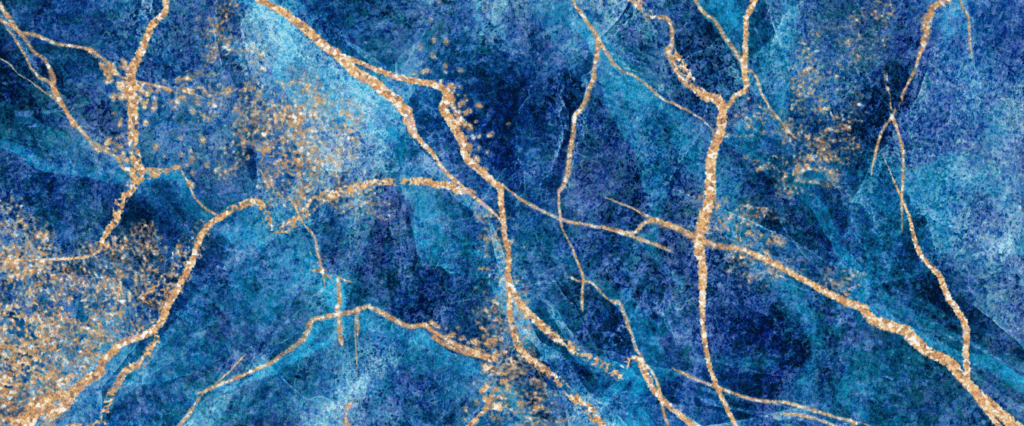The medical technology (Medtech) industry has undergone transformative innovation over the past five years, propelled by advances in drug delivery systems, wearable monitors, radiology AI, and telehealth platforms. Alongside this innovation has come a surge in intellectual property (IP) disputes, particularly driven by Non-Practicing Entities (NPEs), also known as patent assertion entities (PAEs). In the Medtech industry, NPE litigation has historically been less prevalent compared to sectors like software and telecommunications, but it is a growing concern, particularly as Medtech innovations increasingly incorporate software and digital technologies. These NPEs have increasingly targeted the MedTech sector, leveraging aging and narrowly defined patents to extract settlements or licensing fees. Consequently, Medtech companies are being forced to develop a defensive IP strategy as an offensive tactic to protect their most valuable assets.
Rising tide of NPE-led patent litigations in Medtech
Between 2020 and 2025, the volume of patent litigation in the Medtech domain has grown significantly. While exact figures vary by source, RPX Corporation reported a 21.6% increase in NPE filings in Q4 of 2024 alone, and Unified Patents observed a 14.06% increase in overall patent disputes in the first half of 2024 compared to the prior six months.
Although traditional high-tech and telecom sectors have long been popular targets, Medtech has emerged as a lucrative arena for litigation due to the complexity of its innovations and the high value of medical devices and software. Subdomains such as imaging systems, auto-injectors, infusion pumps, and AI-powered diagnostics have also seen increased litigation from both competitors and NPEs.NPEs typically acquire patents to monetize through licensing or lawsuits, targeting both large corporations and startups. The Unified Patents 2023 Patent Dispute Report notes that NPEs, including patent assertion entities (PAEs) like Jeffrey Gross’s Patent Armory, were responsible for 54% of patent litigations in 2023, with Medtech-related suits comprising about 15% of the total litigation cases. This trend continued in 2024, with NPE filings rising significantly in the first half of the year, particularly in the Eastern District of Texas, a plaintiff-friendly court.
Auto Injection LLC and Monument Peak Ventures are key NPEs active in Medtech. In the past five years, these entities have displayed a pattern of acquiring dormant portfolios that range from pharma exits or license bundles to defunct startups that generate significant revenue through non-commercial channels.
Notable NPEs in 2025 to watch:
- Auto Injection LLC has been involved in multiple suits around mechanical and design patents for drug delivery systems, particularly targeting companies in the auto-injector and infusion device markets like GSK, Medtronic, Novo Nordisk, Bayer, and Ypsomed AG in 2024-25. Backed by Anjay Venture Partners LLC, Auto Injection LLC acquired ~70+ IP assets from Sanofi in 2024, 11 of which have been asserted litigations.
- VDPP, LLC had been asserting its 3D viewing technology patents against several players in consumer electronics and automotives like Lenovo, Dell, Qualcomm, Mercedes, Kia Motors, Volvo, and others and has now expanded their focus to encompass Medtech. So far in 2025, VDPP LLC has filed several litigations against Medtech companies like Medtronic, GE Healthcare, Siemens, and Abbott, bringing them to 31 active cases and 84 inactive cases filed since 2019.
- Web2.0 Technologies (Pennar Software Corporation) had previously focused on asserting patents against software companies like Google, Zendesk, Trello, and others. Starting in 2025, they have filed nine patent litigations against various medical centers like St. Lukes Health Memorial Hospital, Longview Regional Medical Center, and Christus Good Shepard Medical Center on patents related to data communication and storage.
- Moskowitz Family LLC, a family-based NPE, has been monetizing its technology related to spinal fixtures against Globus Medical, and this year, they expedited assertions against multiple companies like Medtronic, Nuvasive, Warsaw Orthopedic Inc, and Titan Spine Inc.
- Patent Armory Inc. declared aggressive intentions to file patent litigations against operating companies in 2024. It filed 110 cases last year and 21 cases so far in 2025 (up to May). Defendants include companies across diverse technology domains like Finance, Food & Beverage, Medtech, Healthcare, and Software.
- Monument Peak Ventures, an NPE and Dominion Harbor entity, has asserted legacy portfolios originating from Kodak and other imaging companies, often applying them to digital health and imaging technologies in novel contexts.
Geographical and legal hotspots
Medtech is a high-margin global industry, making it lucrative for NPEs to extract settlements or licensing fees. NPEs prefer courts in jurisdictions that facilitate quick resolutions. Courts like E.D. Texas (US) or Düsseldorf (Germany) have specialized patent dockets and fast timelines, enabling NPEs to pressurize defendants into settling rather than enduring lengthy trials.
Further, European courts, especially in Germany and the UPC (Unified Patent Court), readily issue injunctions, threatening Medtech firms’ market access and forcing settlements.
Medtech patents often involve software and hardware integration, attracting NPEs with broad claims that are easier to assert in courts with technical expertise (e.g., Munich, Delaware).
- United States: The Eastern District of Texas and Delaware remain the most popular venues for NPE litigation due to plaintiff-friendly environments, accelerated timelines, and the capability to address technically complex assertions. Cases often involve major players like Medtronic or Boston Scientific, with NPEs asserting patents on imaging systems, surgical devices, or wearable technologies.
- Germany: A jurisdiction particularly strong for asserting mechanical device patents under its bifurcated system. The Düsseldorf Regional Court is Europe’s busiest patent court, followed by Munich and Mannheim, due to their specialized patent chambers, experienced judges, and fast proceedings (often under a year). German courts are plaintiff-friendly, automatically granting injunctive relief upon finding infringement without requiring a U.S.-style “eBay test” for irreparable harm. This makes Germany attractive for NPEs seeking to pressure Medtech firms into settlements.
- Unified Patent Court (UPC) – Local Divisions (e.g., Munich, Paris, The Hague): Launched in June 2023, the UPC centralizes patent litigation across participating EU states, offering a single venue for pan-European injunctions. NPEs are increasingly active in the UPC’s local divisions, particularly Munich and Paris, due to their expertise in technical cases and the court’s streamlined procedures. The UPC’s ability to issue Europe-wide injunctions makes it a powerful tool for NPEs targeting MedTech companies with cross-border operations, especially for patents on digital health or wearable devices.
- U.S. International Trade Commission (ITC): While less common in Medtech, it has been used strategically in hardware disputes.
NPE strategies and industry response
NPEs have evolved their strategies to align with the nature of Medtech innovation:
- Mechanical innovation targets: Devices like auto-injectors and wearable pumps are frequently hit due to their complex mechanical and design components. Technologies related to display, such as electronics, have cross-domain relevance that are leveraged by the NPEs.
- Connectivity: Telecommunication and data security has become an essential part of MedTech. From simple wearables to complex robotic surgical instruments, telecommunication supports precise diagnosis, treatment, and procedures.
- Data Storage and Security: The data gathered by the connected Medtech devices require massive storage infrastructure. Leading Cloud Storage providers have been collaborating with Medtech companies to provide secure data storage and sharing.
- Digital health and AI: Radiology AI, triage platforms, and patient monitoring systems attract NPEs focused on software patents and user interface claims. Technologies related to image processing for diagnosis, precision treatment regime and disease monitoring, remote care, and data analytics are the major areas of focus.
Defensive strategies and industry response
As litigation has risen, so has the Medtech sector’s interest in proactive IP risk management. High-profile patent disputes, often involving substantial financial stakes, have underscored the need for robust IP strategies to mitigate risks such as wasted R&D resources, business setbacks, costly legal battles, loss of market share, or diminished investor confidence. Strengthening patent portfolios related to an innovative technique/product is also a necessary step to deter frivolous assertions. Proactive measures, including those thorough patent landscaping, freedom-to-operate analyses, and strategic IP portfolio development, will enable Medtech firms to anticipate potential conflicts, secure their innovations, and maintain a competitive edge in an evolving market. This shift reflects a broader recognition that effective IP risk management is not just a legal necessity but a critical component of business strategy in an innovation-driven industry.
Key responses include:
- LOT Network membership: More Medtech firms are joining the LOT Network to mitigate NPE threats. As of October 2024, 16 new Medtech members have joined LOT Network, expanding a distinguished lineup that already features Edwards Lifesciences, BD, Olympus / Evident, Boston Scientific, Stryker, Smith & Nephew, Dexcom, LifeScan, Agilent, Illumina, Merit Medical, Topcon Japan, TheraSigma, Concentric Health Alliance, Active Life Solutions, and more.
- Freedom-to-Operate (FTO) analysis: Routinely conducting comprehensive FTO reviews before commercializing new technologies and products.
- Invalidity opinions: Seeking legal opinions to challenge the validity of NPE patents, potentially filing declaratory judgment actions to gain leverage.
- Defensive patent aggregation: Purchasing patents to license them defensively, deterring NPEs from acquiring and asserting them. Building defensive patent protection for key products by acquiring patents from Medtech start-ups, medical company spin-offs, technology company divestments etc. Creating strategic partnerships and cross-licensing to reduce litigation risk.
Looking Ahead
The intersection of hardware, software, and connectivity in Medtech ensures that the sector will remain a focal point for NPE litigation. As devices become smarter and more integrated, NPEs are expected to assert more complex claims, especially in user interface design, sensor feedback loops, and AI-driven clinical decision support.
Stakeholders should prepare for this reality by investing in robust IP due diligence, engaging in industry-wide defence mechanisms, and monitoring litigation trends to stay ahead of emerging threats.
To effectively turn these potential threats into opportunities for growth, consider the frameworks outlined in the UnitedLex playbook, Strategies to Navigate Volatility in a Dynamic Political and Economic Environment.










